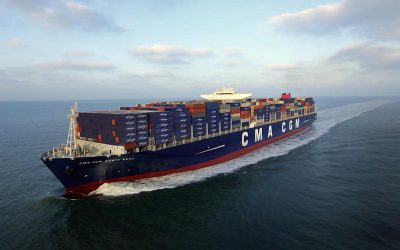Fastest Growing E-Commerce Hub Of The Middle-East
Ever since the foundation of the United Arab Emirates (UAE) in 1971, the region has experienced dynamic geographic changes. The UAE is strategically located in the Middle East between Oman and Saudi Arabia, on the south-eastern shores of the Arabian Gulf, on the western shores of the Gulf of Oman, and is on the southeast of the Arabian Peninsula.
The UAE has emerged as the fastest-growing e-commerce hub in the Middle East, thanks to its geographical significance.
The Geographical Significance of UAE:
Dubai’s ideal location has bolstered its position as the global logistics hub. Dubai is regarded as a gateway that connects the growing economies of Africa and South East Asia with the world’s most progressive and stabilised markets of Northern America and Europe.
UAE’s Growth as a Global Transit Hub for Sea-Air Logistics:
Logistics can enormously impact any e-commerce business. Dubai’s strategic infrastructural facilities have created colossal opportunities for its air transport system to flourish. Viewed as an airport city or ‘aerotropolis’, Dubai is considered to be one of the major global trans-shipment hubs. The UAE is a focal point for distribution, and its low logistics costs and brilliant infrastructure make it an ideal place for e-commerce to thrive. The expansion of Dubai International Airport (the sixth busiest cargo airport in the world) and the newly-established Al- Maktoum International Airport that is directly connected to the Jebel Ali Port has led to immense growth in cargo volumes, passenger numbers, and flexible sea-air routes. The emirate of Dubai has the third most connected
air hub with the busiest international airports to facilitate air-freight logistics. It has direct flight connections to the majority of global capitals without delayed layovers.
The Dubai World Central (DWC), also known as Dubai’s airport of the future, has opened its doors for global cargo operations by holding almost 5 to 7 million passenger capacity terminals. It has a direct connection with the Jebel Ali Port, which is the busiest port in the Middle East and 9th busiest in the world, operating across 150+ shipping lines, providing more than 90 weekly services to 115 ports globally.
UAE leveraging the cross-border markets and potential business opportunities:
Globalization has turned countries like the UAE into major players in the international logistics supply chain. Favorable international policies and the promotion of open trade across borders have made cross-border deals possible, even in the wake of the Covid-19 pandemic.
The UAE is the EU’s (European Union) 11th largest trading partner and the 1st in the Arabian Gulf. The goods manufactured in the Asian countries are distributed through Dubai to various parts of the world including Africa, the Middle East, the Russian Commonwealth, and to Eastern Europe within two weeks of transit time.
The UAE has expanded its business opportunities within the MENASA region (Middle East, North Africa, South Asia) and in the EMEA region (Europe, Middle East, Africa), namely in Russia, Belarus, Ukraine, and Moldova as well.
In South Asia, China is Dubai’s biggest non-oil trade partner. By 2030, India is expected to become the biggest export destination for the UAE, and it is estimated to account for 14% of the total goods and services trade. The UAE and the Kingdom of Saudi Arabia are the most dominant players in the MENA region, accounting for over 50% of the region’s imports and exports.
The UAE’s e-commerce business has skyrocketed, thanks to its geographic location, enabling it to rise in stature and conduct business worldwide.
To know how UAE can help your business flourish by streamlining logistics and operations, check out our whitepaper.
Qafila offers efficient worldwide freight-forwarding services. Connect with us at hello@qafila.com or contact us at +971 4 523 3933.




